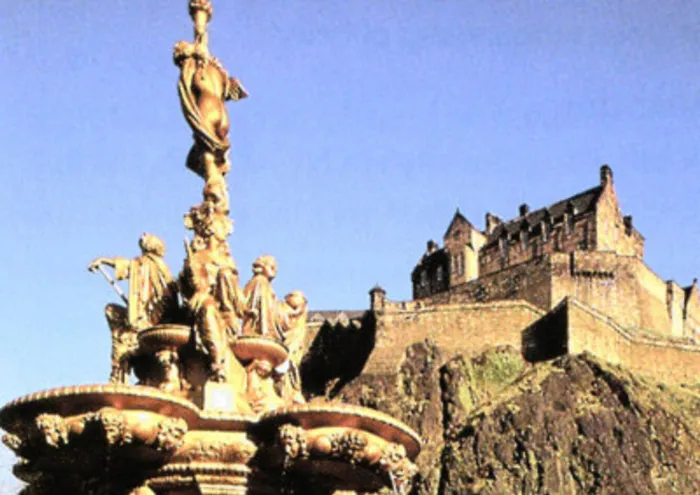Taking the freedom of the rails

Stately: Edinburgh Castle is one of the many magnificent sights along the UK rail network. Stately: Edinburgh Castle is one of the many magnificent sights along the UK rail network.
London - A crisp October morning greets the 07.06 Paddington to Paignton express as it leaves London to begin its journey westwards. I have a window seat, steaming cup of tea in hand, and am setting off on a rail journey around the UK.
I have a rail map and my ticket – the Rail Rover. The 14-day ticket has not increased in price for almost eight years, and will let me travel on almost every train in the country.
The National Rail Rover is one of the railway industry’s hidden secrets. For £650 (about R7 800), or £429 (about R5 150), and both are cheaper with a railcar, you can buy a ticket that allows you to travel the length and breadth of the country. Given that a walk-up fare from Penzance in Cornwall to Inverness in Scotland is £215 (about R2 580), the Rail Rover can represent monumental savings if well used.
I pass Reading for Pewsey. There, a soft and bewitching sunrise beams its way through a blanket of mist, lighting up flocks of Canada geese, herds of roe deer and the bright colours of autumn. The soft green tones of the West Country come into view as the train sweeps past the Westbury White Horse and on to Taunton and the Somerset Levels.
My final destination today is Taunton. From the western tip of Cornwall I will head back east and northwards, through Bristol, Birmingham, Sheffield, Newcastle, Edinburgh, Aberdeen and Inverness, all the way to the northernmost point on the UK rail network, Thurso. But first comes the Dawlish Sea Wall.
The line from Exeter to Newton Abbot is considered one of the most spectacular in the UK. The gorgeous, clear sunshine drenching the vast estuary of the Exe is only the start as the train heads past Teignmouth and arrives at the famous Dawlish Sea Wall, a four-mile stretch of railway where the line cuts its way through sea cliffs as it hugs the coast, the English Channel a mere breath away. Today the sea is a serene pond under an azure sky. Forget autumn Devon, I could be on the French Riviera.
I change at Newton Abbot for Penzance, Dartmoor brooding to the north. Plymouth brings sightings of the naval docks and the Royal Albert Bridge over the Tamar. From there the train twists and rolls its way through Cornwall, passing abandoned tin mines, until it sweeps its way along the edge of a sandy beach, passing St Michael’s Mount and into Penzance.
I have just enough time to grab a Cornish pasty and a cup of tea before I’m back on another train heading eastwards. A few hours later and we pull into Taunton where I’ll spend the night.
One of the best things about a National Rail Rover is the sense of freedom it gives you. You can climb off one train and on to another without any restrictions. The next day I board the 07.51 Glasgow train at Taunton.
I pass the Clifton Suspension Bridge at Bristol, the Malvern Hills near Cheltenham and the vast sprawl of Birmingham. Huge cooling towers in the Midlands, the twisted spire at Chesterfield and the forlorn empty industrial wastelands of Sheffield pass by, then Durham Cathedral and the dramatic entrance over the Tyne into Newcastle.Once again we hug the coastline, passing Holy Island and on to dramatic cliffs north of Berwick, the North Sea roaring below. I change at Edinburgh, the castle looming overhead, to head over the mighty Forth and Tay railway bridges, spectacular Victorian engineering, boiling seas and the distant Highlands brought together in one majestic tableau.
I spend the night at Aberdeen in the luxury of the city’s Malmaison Hotel. After a huge breakfast I take the train to Inverness, the Scottish scenery becoming more spectacular with each click of the rails. But it is north of Inverness on the last leg of my Thurso-bound journey where the grand theatre of the British landscape reaches its apogee.
First come the giant oil rigs of the Cromarty Firth, lit up like sci-fi Christmas trees, then mammoth sweeping hills that rise into sold granite mountains before the track settles once again along a coastal stretch. There is none of the gentle splendour of the Dawlish Sea Wall here, just a raw blast of pebbled beach and jagged rock, huge foaming waves crashing mere feet away. Then swinging back inland, the railway covers a
I grab a quick lunch, and leave Thurso on the next Inverness-bound train.
I’m only on day three of my UK-wide travels, and already I’ve covered toe to tip of the British Isles, absorbing the urban and rural terrains of this diverse and complex little island, all from the comfort of a railway carriage.
How to get there
A National Rail Rover is available from any UK ticket office. Some restrictions apply on Virgin, East Coast, East Midlands, and Cross Country services before 10am, when alighting at certain stations. See nationalrail.co.uk for full details. – The Independent